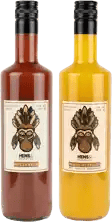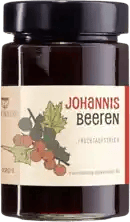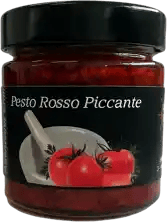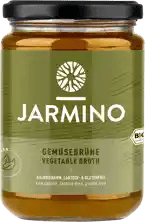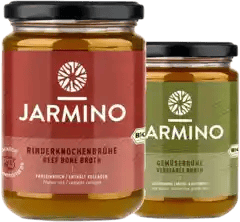Quality instead of quantity!
7,000 independent products
No mainstream
7,000 independent products
Tapas - everything about the small dishes from Spain
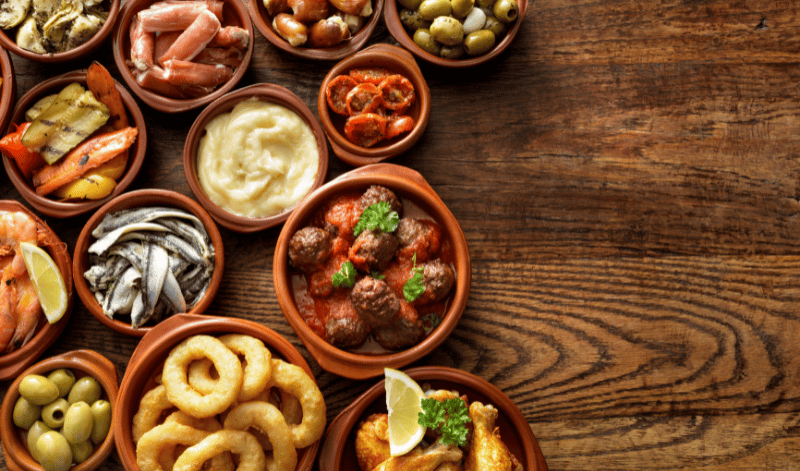
The most important facts summarized for you:
- Tapas originate from Spain and are small dishes that are served as an appetizer or snack
- The origins date back to the 13th century
- Tapas are always individual: there are countless dishes and regional specialties
- The classic accompaniment to tapas is wine or sangria - but beer is also permitted
- Tapas-like dishes are also known in other countries
Welcome to the fascinating world of tapas, where small bites bring great pleasure! The history of these Spanish delicacies is as colorful as the variety of ingredients from which they are made. From the bustling streets of Spain to gourmet restaurants around the world, tapas have become a cultural icon.
In our foray into the world of tapas, we explore not only their origins, but also the passionate explosions of flavor created by combining carefully selected ingredients. Immerse yourself in tapas culture with us and discover flavors & exciting facts that will take your culinary journey to the next level!

Tapas are small dishes that are often served as starters or snacks. The main focus is on sharing and socializing.
What are tapas?
Tapas are small dishes that are traditionally served as a starter or snack. The term "tapas" is derived from the Spanish word "tapar", which means "to cover" or "to cover up".
Origins and history of tapas
The origins of tapas culture date back to the 13th century. There are several legends about how tapas came about. One widespread legend says that King Alfonso X of Castile was forced to eat small bites of food during an illness in the 13th century, accompanied by small amounts of wine between meals. After his recovery, he ordered that small portions of food with wine should be served in taverns throughout Spain to promote people's health.
A more practical explanation is that tapas arose from the need to protect food from flies and dust. In old taverns, thin slices of bread or ham were often placed over drinks to cover them. This then evolved into small portions of food being served with drinks.

Those who prepare tapas divide the dishes into small bites - like this Tortilla Española.
Types of tapas
Tapas are a popular type of Spanish appetizer often served in bars and restaurants. They are known for their variety of flavors and textures and are often enjoyed with a cool drink such as sangria or a glass of wine.
There are a variety of types of tapas, which can vary depending on the region and personal preferences. Classic tapas include, for example, olives, pickled vegetables, cheese and sausages as well as seafood such as prawns or squid. But warm tapas dishes such as patatas bravas (fried potatoes with a spicy sauce) or albondigas (Spanish meatballs in tomato sauce) are also very popular.
Tapas are not only a culinary delight, they also reflect Spain's sociable food culture. They are often enjoyed with friends or family in a bar and accompanied by a glass of wine or beer. The focus is on sharing the small delicacies, which contributes to a relaxed and cozy atmosphere.
Regional differences in tapas
Although tapas are known throughout Spain, there are regional differences in terms of the type of tapas and the ingredients used.
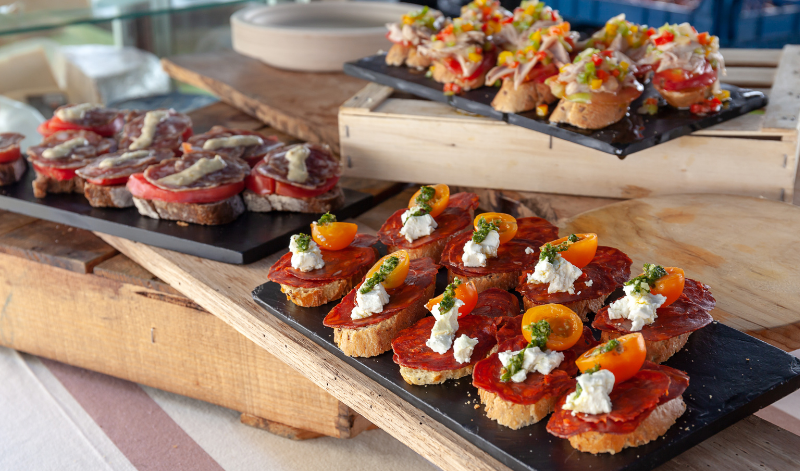
In the north of Spain, tapas are mainly served as small sandwiches.
In northern Spain, especially in the Basque Country and Asturias, tapas are often hearty and savory dishes. Here, for example, you will find pintxos, small sandwiches or rolls with various toppings such as ham, cheese or seafood. Deep-fried snacks such as croquettes or squid rings are also very popular here.
Seafood tapas are very popular on the Mediterranean coast of Spain, especially in Catalonia and Valencia. Gambas al ajillo (garlic prawns), sepia a la plancha (grilled squid) and calamares a la romana (fried squid rings) are just a few examples of these delicious variations.
In Andalusia in the south of Spain, on the other hand, the focus is on light and refreshing tapas. Gazpacho (cold vegetable soup), salmorejo (creamy tomato soup) and boquerones en vinagre (anchovies marinated in vinegar) are typical Andalusian tapas.
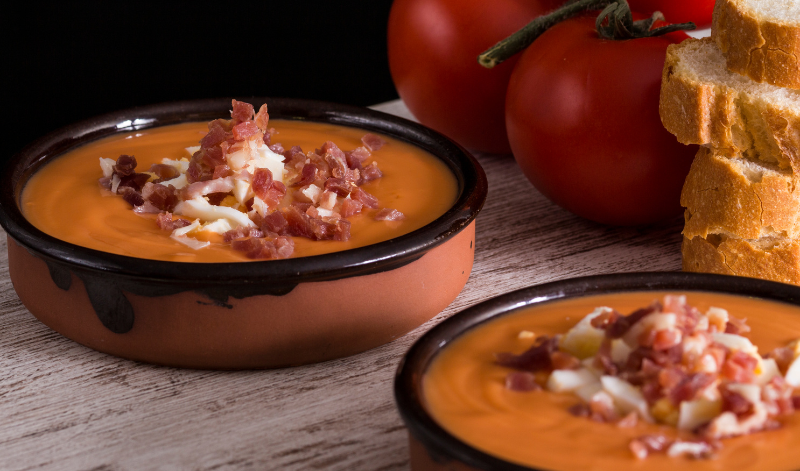
Salmorejo, a creamy tomato soup, is often served in Andalusia.
There are also regional differences in tapas on the Canary Islands. Local ingredients such as bananas or papayas play a greater role here. Mojo verde (green sauce), papas arrugadas con mojo (salty potatoes with mojo sauce) and queso asado con miel de palma (grilled cheese with palm syrup) are some of the popular Canarian tapas.
An overview of the most popular tapas
Here is an overview of the most popular tapas:
- Patatas Bravas: This is one of the most famous tapas dishes. It consists of crispy deep-fried pieces of potato covered in a spicy tomato sauce.
- Tortilla Española: This hearty omelette consists of eggs, potatoes and onions. It is often cut into small pieces and served warm or cold.
- Gambas al Ajillo: This dish consists of prawns fried in olive oil with garlic. It is easy to prepare and has an intense flavor.
- Albóndigas: delicious meatballs cooked in a rich tomato sauce.
- Pimientos de Padrón: these small green peppers are often deep-fried and sprinkled with coarse sea salt. Some can be mild, while others can be very spicy - a pleasant surprise for the palate!
- Croquetas: These creamy croquettes consist of a béchamel-like mixture with various fillings such as ham, cheese or seafood.
- Jamón Ibérico: This air-dried ham is thinly sliced and often served on a platter. It has an intense flavor and a delicate texture.
- Queso Manchego: This semi-soft cheese made from sheep's milk is a classic among tapas. It is often cut into thin slices and served with olives or bread.
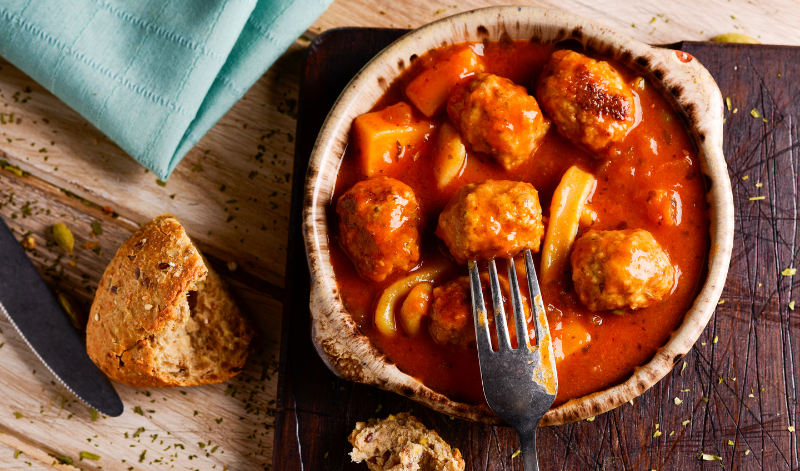
Albóndigas are small meatballs in tomato sauce and are a classic tapas dish.
Tapas: frequently asked questions and answers
How many tapas per person?
For a meal, you can usually expect to eat around 3-5 tapas per person.
What does tapas literally mean?
The Spanish word "tapas" literally means "lid" or "cover".
Which tapas are low in calories?
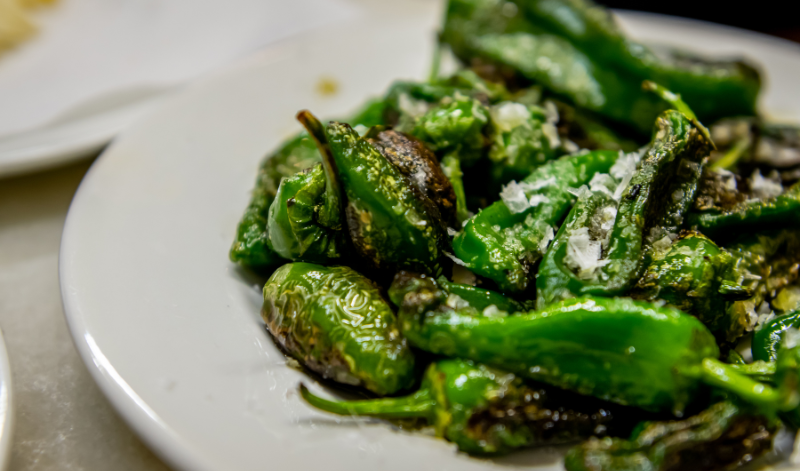
Pimientos de Padrón are not only incredibly tasty, but also low in calories.
- Gazpacho: Cold vegetable soup, usually made from tomatoes, cucumber, peppers and onions.
- Boquerones en Vinagre: Marinated white fish in vinegar, olive oil and garlic.
- Gambas al Ajillo: prawns fried in garlic and olive oil.
- Pimientos de Padrón: Small green peppers, lightly fried in olive oil and sprinkled with sea salt.
- Espárragos Blancos: White asparagus, often served with a light vinaigrette (or mayonnaise, for the less caloric option).
- Setas al Ajillo: Mushrooms fried in garlic and olive oil.
- Tortilla Española: Spanish omelette with potatoes and onions, served in small portions.
- Almejas a la Marinera: Mussels cooked in a light, spicy tomato sauce.
- Salpicón de Mariscos: Seafood salad, often with prawns, mussels and crab.
- Berenjenas con Miel: slices of eggplant, lightly fried and drizzled with honey.
What do you usually drink with tapas?
A traditional choice for tapas is a glass of wine. In Spain, red wine (vino tinto) or white wine (vino blanco) is often served with tapas. Some popular varieties are Rioja, Tempranillo or Albariño. Red wines go well with savory tapas such as meats and cheeses, while white wines can be a fresh addition to seafood and vegetable tapas.
Another option is cava, a Spanish sparkling wine similar to champagne. Cava is refreshing and slightly bubbly and goes well with light tapas such as olives or prawns.
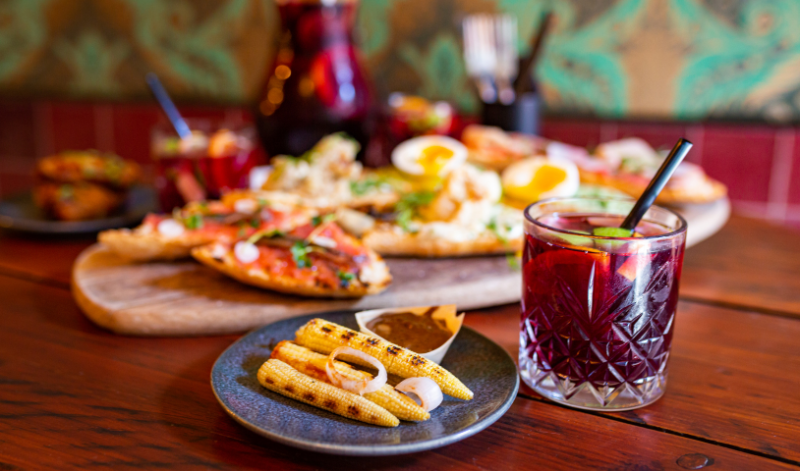
The classic with tapas: Sangría
In addition to wine, beer can also be a good choice. You can't really go wrong with your choice of beer - whatever tastes good goes well with it! Beers such as lager, pilsner, a fresh wheat beer, a hoppy IPA or pale ale, as well as Belgian beer styles such as Wit or Saison, go particularly well with the aromas of fried or spicy tapas.
Of course, you shouldn't forget the classic Sangría! This refreshing fruit cocktail made from red wine and fruit is very popular with many guests and goes perfectly with the convivial atmosphere when enjoying tapas.
Do other countries also have tapas?
There are various similar concepts to tapas in other countries.
In Italy, there is the concept of antipasti, where a selection of small appetizers are served to whet the appetite. These can include different types of cheese, cold cuts, olives or pickled vegetables.
Meze are very common in Greece. Meze are a type of small dish that are traditionally enjoyed with ouzo or wine. They consist of a variety of hot and cold dishes such as grilled meat, fish or vegetarian options such as tzatziki and stuffed vine leaves. Similar to the Greek language, the Arabic language also uses the term mezze to describe a way of presenting small dishes.
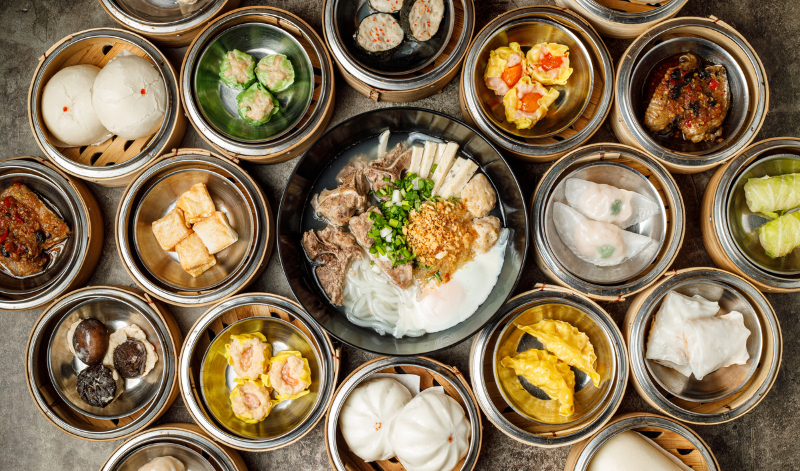
The concept of tapas is also known in other countries. In China, for example, dim sum is a very popular small dish.
There are also similar concepts in Asian cuisine, such as dim sum in China or izakaya in Japan. Dim sum consists of a selection of small steamed or deep-fried dishes such as dumplings with various fillings or steamed vegetables. Izakaya are Japanese inns that serve a variety of small dishes that are ideal for sharing.
Although these culinary traditions have specific names and may differ slightly from one another, they all share the same concept: small, varied and tasty portions that are ideal for sharing and sampling.
Matching products to the article
Recent articles
-
24 JulDrinks advent calendar: The best gin, whisky & beer calendars for the pre-Christmas period
-
24 Jul"The quality of Languedoc wines simply amazed me" - An interview with two noses for wine
-
10 JulLimoncello - All about the Italian lemon liqueur
-
10 JulAll about lemonade - a world-famous classic
-
18 JunMarder Edelbrände: Germany's best single malt whisky
-
06 JunEuro 2024: Beer, soccer and singing!
-
06 JunThe 11 best gins for the 2024 European Championship summer
-
29 MayThe art of fermentation: discover the amazing benefits for your health
-
28 May"It sounds crazy, but it tastes fantastic!" - Interview with a pizza chef
Brilliant!

Bitte bestätige deine Anmeldung noch eben - du hast eine Bestätigungsmail von uns. Klicke darin auf den Link. Danach bekommst du deinen Rabattgutschein.





































































